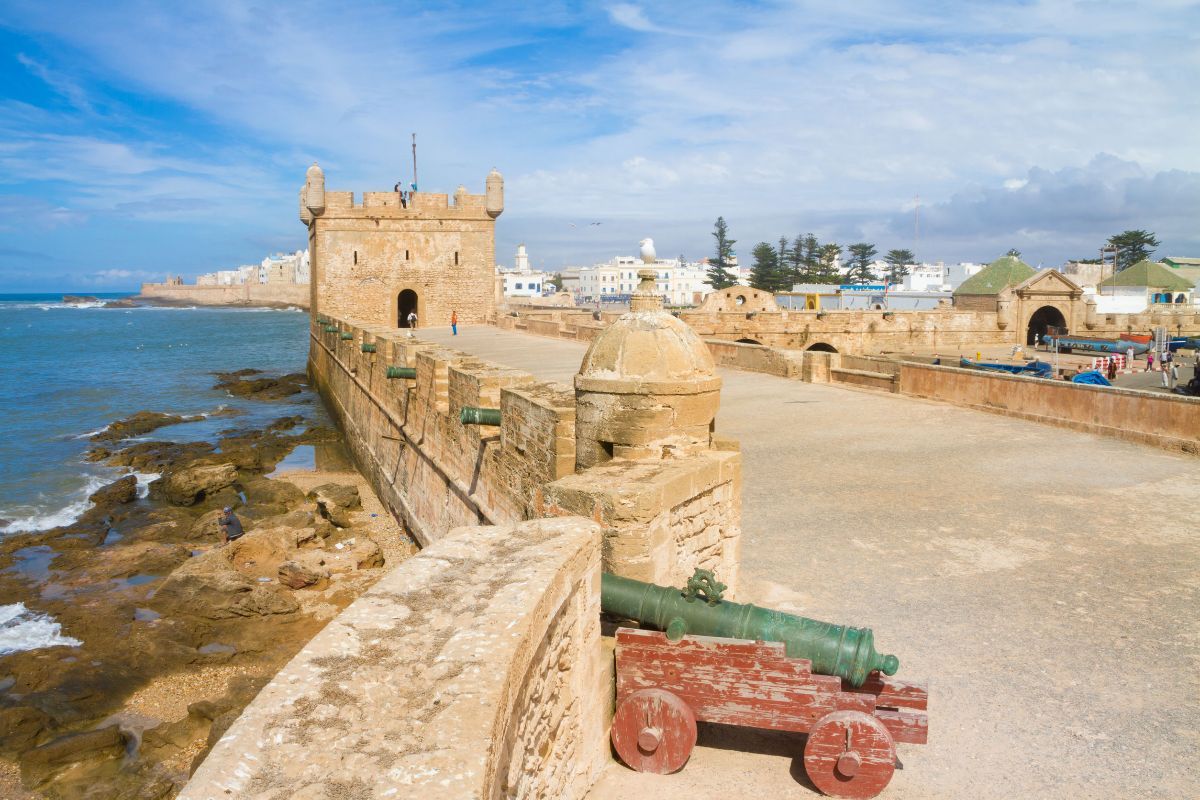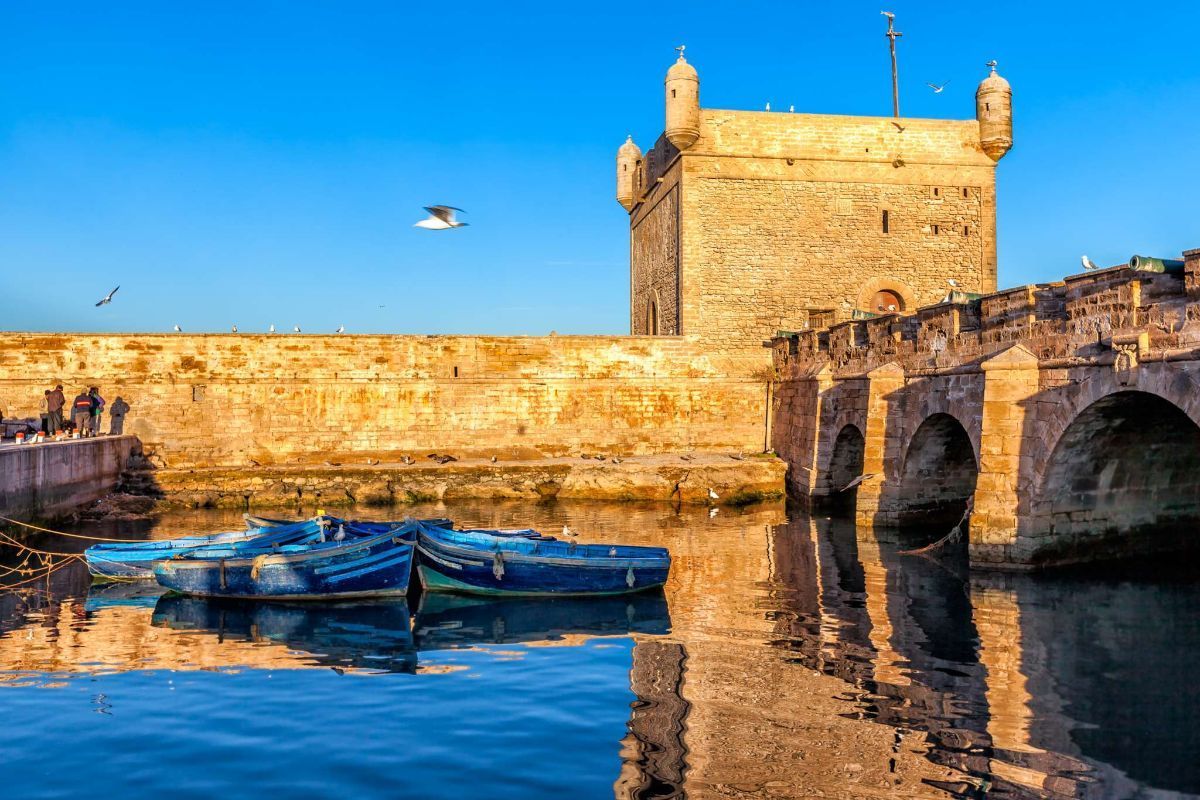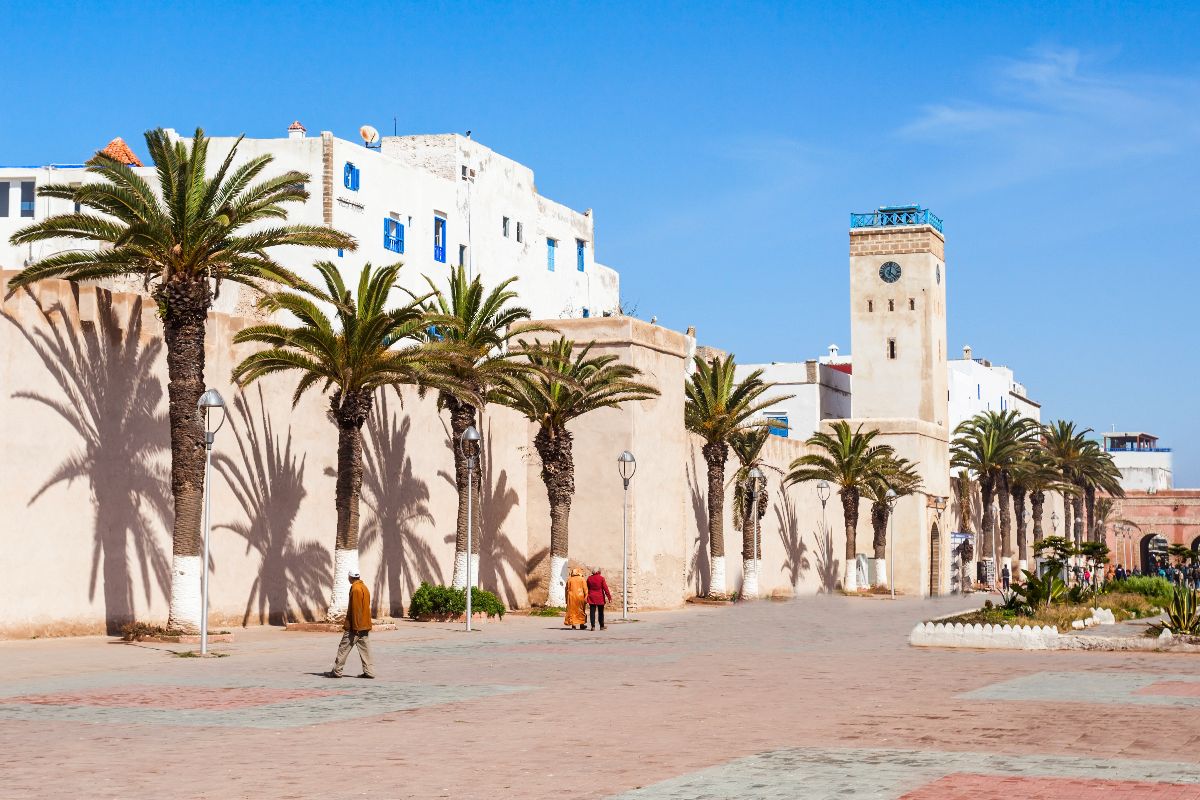Essaouira is undoubtedly one of the pearls that Morocco has on its Atlantic coast. Bathed by the ocean, it preserves a very interesting monumental heritage, dating from different periods. In addition, it displays some very striking traditions, some the fruit of popular life and others, as a demonstration of folkloric pride. For all these reasons, a trip here will always be a wise decision.
Essaouira is located on the Atlantic coast, in the southern part of the country, about the same distance from Marrakech and Agadir. For this reason, many travelers organize a getaway to this city if they are on vacation in either of these two destinations. Administratively, it is part of the Marrakech-Safi region and has more than 100,000 inhabitants.
Its climate is similar to that of other Atlantic cities of similar latitude: warm but ‘ventilated’ thanks to the breeze coming from the ocean, cooling the atmosphere in the summer months. This wind can be a bit uncomfortable for those who want to lie on the beach and sunbathe, but it is a very appreciated element for surfers and other water sportsmen.
These are the distances that separate Essaouira from other Moroccan cities, which will help you to get an idea of its position:
Despite being a small city, it has its own airport (Essaouira-Mogador), although of small dimensions: only flights of some low-cost airlines, mainly from France and the United Kingdom, land here.
However, the absence of a ferry port and a train station (either high-speed or conventional) makes air travel the only option for those wishing to get here from distant destinations. The other alternative is to fly to Marrakech or Agadir, which are the closest international airports.
In any case, road transport is the most common option to travel to Essaouira. Although its connection by bus is practically limited to the lines with Marrakech, Casablanca and Agadir, private vehicles use two highways to access the city: the N1 for those traveling from the north (Safi, Casablanca) or from the south (Agadir) and the N8 for those traveling from Marrakech.

The history of Essaouira, as in many other destinations on the Atlantic coast, is linked to that of several civilizations of great sailors. The first evidence of this place is related to the Phoenicians, almost eight centuries before the birth of Christ, when they set up a fishing and pottery production camp here.
The Romans, centuries later, also arrived here and exploited the place as a center for the production of purple, so valuable in the ancient world because it was a highly valued dye among the ruling class.
This settlement did not regain international relevance until the Portuguese settled here, in the midst of their commercial and conquering career at the beginning of the 16th century: they built a port and a fortress on the mainland, which served their own sailors. It is at this time that it received the name Mogador, which is still very often used today.
But the city as we know it today did not begin to emerge until 1760: that year, the Alawite Sultan Sidi Mohammed ben Abdallah ordered a historic medina to be built next to the Portuguese fortress, and commissioned a French engineer in prison, Theodore Cornut, to carry out the project.
The result: a historic center surrounded by walls, as is usual in Moroccan cities, but with the exception of having a regular layout, like the European urban developments that were already in vogue in the Western world. In fact, the translation of Essaouira is something like “the well-designed”, in reference to its rectilinear layout.
This was followed by a period of prosperity, as Essaouira eventually took over the predominant commercial place that Agadir had, due to its good position and the security provided by its coastal fortress.
Today, the port still has a certain amount of activity of small fishermen, whose catches enliven life in the coastal district, where a small market is set up for the purpose when the goods arrive. But above all, Essaouira has embraced national and international tourism and has positioned itself as an interesting excursion of one or several days from Marrakech, also exploiting the surrounding beaches and the activities that can be done there, such as surfing.

Essaouira is a city that does not disappoint: it is interesting for tourists of very different profiles. And the best proof of this are these varied reasons that can convince you to make a getaway to this destination:

Despite being a small city, Essaouira has many things to see. Fortunately for the traveler, they are relatively close to each other, so it will be easy to set up a walking tour without missing any places of interest. This list includes the most important ones:
Essaouira has experienced a great tourist development in recent years. This, in turn, translates into improved services, many of which are of premium quality. These are some ideas that you can take into account if you want to enjoy a truly exclusive trip:
But the best way to configure a tailor-made trip of the highest quality is to trust Chic Morocco: we are an agency with experience in this Atlantic city and with premium suppliers, who will know how to meet your demands when you find yourself in this tourist destination… and in any other of the country.







